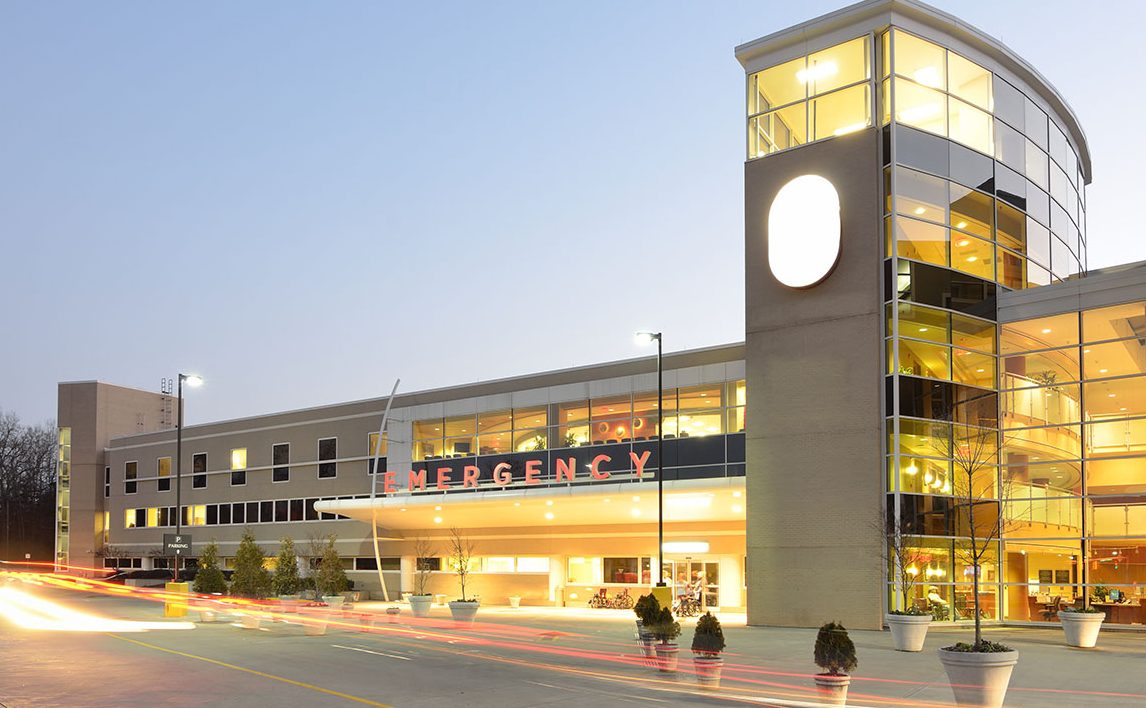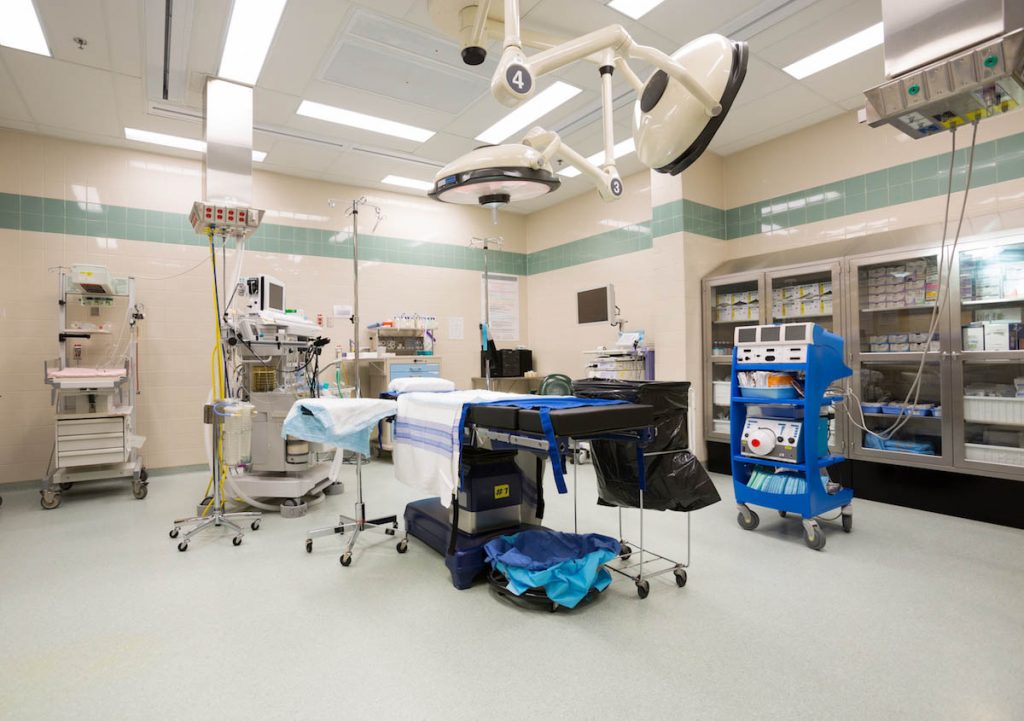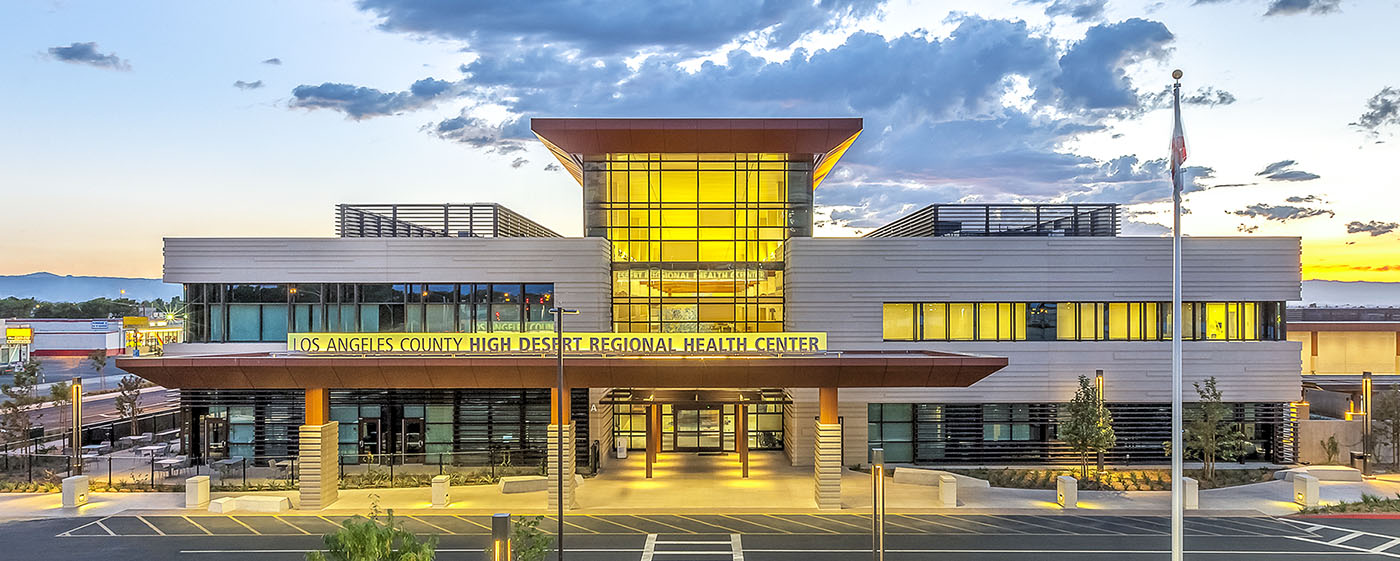Since its launch in 2010, more than 20 million people have signed up for the Affordable Care Act. More than six million were previously uninsured. These numbers bear out a change in approache to the fundamentals of healthcare delivery, and the need for a shift in what’s required of a healthcare facility.
At Glumac, we wanted to open a discussion on how the A/E/C industry must adapt to deliver projects that work within the new model of healthcare business plans. So for StraightTalk 2016, we invited some of the industry’s best for a panel discussion on the new and adapting approaches to healthcare project delivery. In November, we were joined at the City Club of San Francisco by Jeff Fyffe, Jones Lang LaSalle; Stuart Eckblad, UCSF Medical Center; Karen H. Vegas, El Camino Hospital; and Bill Whipple, Sutter Health. Glumac principal and healthcare leader David Summers moderated the discussion.
Q: Everyone has a unique way of delivering an optimum project. Describe yours.
Stuart Eckblad: We’re a public entity. We don’t have the flexibility for what people call “pure IPD (integrated project design).” We do IPD-light. The key for healthcare is that people really need to recognize the delivery model needs to be flexible enough to accommodate change.
For example, an MOB takes three to four years to complete, a good facility takes eight. In that period of time, healthcare laws and practices may have changed two to three times. All delivery methods have issues. But the idea of collaborating gives us tremendous flexibility. That allows us in the middle of the project to make a major change to a building, and allow the team to treat that change as a separate project. That delivery model is the most receptive to the amount of change we see in the healthcare industry. We’ve saved millions.
The public system is different than the private system. And in healthcare, it’s important to accept change and be flexible to meet it, while being sensitive to budgets and resources.
Karen Vegas: We’re more interested in what we can get out of our teams. Everybody knows there’s a lot of work out there, so we’re figuring out ways to get successful teams together and build lasting relationships. That to us is more important than how we contract.
Jeff Fyffe: When we look at the different types and sizes of projects, we see the $20 million and less projects as ones we’re looking to pursue. On the larger projects, we are not seeing design build as a delivery method. History tells us that with clients they lose control, and lose participation.

Q: How do you procure a project that helps improve speed to market?
Bill Whipple: We’re looking to grow our partnerships in the AEC industry. We want to bring the partners together that we want to work with. On very complicated subject matters, we want to partner with you and improve your knowledge of the project subject matter.
We’re needing design professionals who can think in multiple design sets. We don’t need long design narratives from engineers. Just the key systems that were selected and the thought process that went into it. We’re also using a lot more data. There are eight different platforms we use in the planning process. We need to consolidate that, and we’re looking at databases on the planning side.
I think the UC (University of California) system is starting to learn this – the value is in the owner’s reputation. We have found in our projects we are attracting teams we want to attract, because of the reputation of our projects. What’s difficult is that this collaborative process is a great discussion, but there’s a gap in who can participate in that sort of process.
Jeff Fyffe: We’re looking for entities that can work together through difficult situations and do what’s best for the project. That sounds easy, but how many projects have you worked on where the moons were aligned and that project came together perfectly? We’re looking for a group that’s done it before and done it successfully. Of course, things are a little different for us, as we work across state lines. I would say we probably see other states a couple years behind in terms of being transparent and opening up to their partners, and understanding the benefit of an integrated approach.
Q: How do market conditions effect the way you want to deliver projects?
Karen Vegas: It forces us to be more flexible with how we want to contract. We’re looking to build new relationships with new contractors. Right now, we’re all pursuing you – which is great, but it jacks up the price, it’s not a buyer’s market.
In California, it takes five to seven, even 10 years to build a hospital. Our problem is now, as we wait every day, everything gets more expensive, the service we get from our design professionals is less, but we are paying more and more. We can’t move things quickly enough to justify the cost. Our credibility slips with our own administration. So we need to learn how to make choices on who we work with. It’s very hard to make these things happen in real time.
Q: Another delivery model that’s newer to the healthcare market is developer involvement in project delivery. Is that something your organizations look at?
Bill Whipple: Sutter Health has not done P3 (a public-private partnership). When we do engage developers, we access money at a 3 percent interest rate, developers usually around 7 percent. So it would have to make a lot of sense for us to go that route.
Stuart Eckblad: UCSF is a bit of a two headed organization. The campus side has done a few P3s, and have had some success, mostly with patient care facilities. On the healthcare side, we can borrow for a lot less. And that gives us more flexibility for change. We haven’t found an organization that can meet those requirements.

Q: What about pre-manufactured buildings? There are companies doing it for all kinds of projects. Can you tell us about your experience there?
Karen Vegas: I’ve tried to shed light on pre-manufactured facilities. And everyone likes it, but sale is a challenge. The healthcare industry is a legacy industry, so it’s difficult to try to convince people that they need to do some standardization and pre-manufactured at volume. We lobbied Congress to make pre-manufactured buildings possible. But we still haven’t figured out how to do that in the healthcare industry. People still aren’t interested in not being able to do incredible customization. My belief is that the industry will get there, but it’s a very slow time change. We have to get there. We’ve all talked about being faster/better/cheaper, but nothing changes. And pre-manufacturing isn’t a drastic change, since we deal with so much of it in our daily lives.
For example, everyone is building behavioral health facilities. In California, we’re going to be so far behind because it takes so long to build, yet we can’t except pre-manufacturing. We’re too busy deciding what type of bathrooms we’re wanting, or we worry it’s going to be ugly and not unique. That’s not necessary, and that’s not true.
Bill Whipple: I’ve been working on this idea of reducing the deviation in our projects. There’s a step we may be missing in figuring out how to limit the deviation in our projects before we jump to a pre-manufactured approach. The more we can standardize the better. We don’t need to redesign the exam room over and over again. Oddly enough, it’s on the clinical side where we have five different exam rooms and five different clinical models. I can certainly see a day where we start to narrow the variability, and I think it’ll bring a lot of sanity to your work.
Stuart Eckblad: In the academic world, its much different. We have 40 Nobel Prize winners who have clear ideas of what they want, and none are the same. So it’s a challenge. We wrestle with standardization. What we find is that the research changes healthcare so quickly that the room is not the issue. The equipment, the training program, how many people need to be in that room, and people are changing what rooms they use constantly. So it becomes hard to standardize. So we’re moving away from standardized facilities, and wanting to standardize production. What we’re trying to see what systems within the building can be standardized, and work from there. For example, in the cancer building we’re doing right now, we’re not only talking about how much of the room can we standardize, but also how much of the performance we can standardize.
Jeff Fyffe: We’re a long way away from modular buildings. We’ve seen an increase of the contractor’s ability to construct these buildings, which is driving prices down. But constant changes in the industry force us to look in other directions.

Q: How are pharmacy construction mandates effecting your projects?
Bill Whipple: There are multiple sites and smaller scopes of work. We’re in the throes of doing a lot of updates. How do we avoid small ADA upgrades – we’re approaching it as we need to make these kinds of upgrades, but we need a systematic approach to do this type of work. How do we manage these mandates? Leadership is getting the opportunity, even in pharmacy work, to reconsider the patient experience, and asking what the competency of a specific site is, and how it relates to the patient experience. These types of projects help create a system wide standardization around certain processes and procedures. We need to understand the fundamental value of what the work being done is. Can we avoid something as simple but terrible as the wrong prescription being provided to the wrong patient?
Karen Vegas: The mandates are making issues in existing buildings and bringing up a lot of unintended consequences. For example, we have maybe one patient a day who gets chemo in this small Los Gatos pharmacy, where we can’t easily make these mandated changes. So we decide to send them all the way to Mountain View, where we’re always doing construction, and no one can park. Then another unintended consequence is our reputation for service is damaged. And these mandates happen at a speed that is unmanageable with the construction process. They can be very expensive, and very disruptive for patients.
Stuart Eckblad: Three months after a healthcare facility opens, you start tearing the building apart. Codes change, things need to be moved, new ducts need to be installed, regardless of fit. So what we try and do in our capital planning is to understand that these changes will come. So we have to budget for that. For example, you’re going to need to set aside $20 million to manage updates. I can’t tell you tomorrow what that’s going to have to go toward, but you can bet it’ll be something.
Q: Jeff, as you work in multiple states, how do you see lessons learned transferred to providers in other states. We’ve talked about how newer facilities are being built in California, but Nevada for example hasn’t seen that same pace.
Jeff Fyffe: We talk to clients outside of California who are willing to just wait and see what California does, to see where healthcare is going to go. Their facilities are aged, but we’re not seeing them up until the last year or two changing their care model like we have here in California.
Q: Talking about the Affordable Care Act and how its changed the delivery model, we’re seeing more of a focus on wellness. How is that having an impact on facilities, both in the outpatient and inpatient realm?
Bill Whipple: We’ve built three smaller walk-in clinics. They were conceived with a new population who would want more access to care. It’s worth noting that there’s going to be a lot of these. And the speed to market is quick. We’re seeing the inclusion of pharmacy, nursing, social work, physical therapy, and then the ability to hand off one patient between the variety of services. We’re seeing how access to care is changing. Also, our emergency departments are expanding. There could be a day when we stop seeing our Emergency Department needs expanding, but we’re not there yet.
Karen Vegas: We’re looking for areas to open these clinics. And to address our Emergency Department issues we’re looking for urgent care. As we know, most people who go to Emergency Departments don’t need to be there. And we have the same challenge as others, we were behind with digital implementation. It effected Emergency Departments, notably in wait time. Everything has gone up two hours and stayed that way. Patient satisfaction has gone down, and so in response the community wants more Emergency Departments. It’s an unintended consequence. How do we keep up with this demand and still put out a good product and serve our patients?
Stuart Eckblad: We’re trying to increase market by moving patients more to outpatient care. That’s not a unique issue. We’re a primary care center, and what we see – and I think the industry will see – is that these centers will be based on acuity. What we’re seeing is two things – we’re trying to regionalize. Also home health – they Skype us, or we send a patient home with a connection so they can call in to their doctor, which means more IT. It’s fascinating. Our patients come from all over the world. How do you use this kind of technology to cure patients? Can we connect with China and other countries, where in some cases they’re ahead of us? I’m very interested in what the future of patient care is.
Jeff Fyffe: I’ve looked at stats from 2012-2015, less than 25 percent was in clinics and MOBs. 2016, it’s more than 60 percent. And we’re seeing a potential uptick in 2017.
Q: Looking 10 years out, where are the trends in terms of healthcare construction?
Karen Vegas: A recent study mentioned that in 10-15 years we’re going to be under-bedded in the South Bay. That’s part of the reason we’re buying new land. Also, when we bought our hospital in Los Gatos, we wanted to replace it on site, but we needed more land.
Stuart Eckblad: We have patients in our beds for months. I think we’ll continue to see an increase in primary care. Outpatient without a doubt will continue to grow. It’s not just the Baby Boomers. Right now Millennials are not showing up for care – but they will.
Jeff Fyffe: It’s cloudy. All the clients we’re involved with that focus on master planning think there will be less beds. But nobody really knows just when that’ll happen. There just isn’t a ton of evidence yet that supports that.
Bill Whipple: At Sutter Health we have branded helicopters and ambulances, transporting people to more centers of excellence. I think the reason for that is clinical outcomes. A cancer patient might be receiving a dose of a drug that costs $75,000 to make. By consolidating patients in these locations, we can help people receive different therapies in one day. Also, there are so many complex modalities, for example hybrid operating rooms. Clinical trials say why that’s coming out. New approaches to treatments and cures makes design difficult, and the complexity of care is going to increase.


